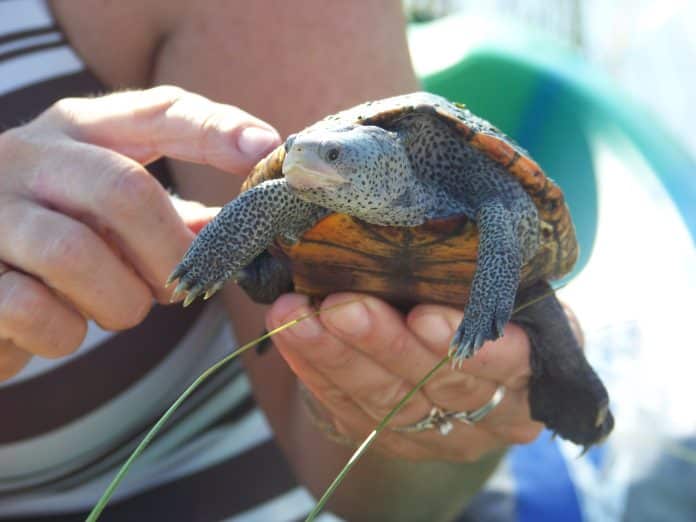By TORY MOORE
[email protected]
Recreational crab traps in Florida will soon be required to have an opening no larger than 6-by-2 inches to prevent accidental trapping and drowning of diamondback terrapins, a turtle species of special concern to scientists. Free bycatch reduction devices (BRDs) are available at select UF/IFAS Extension offices around the state and can be installed on existing crab traps to protect terrapins and bring crab traps into compliance.
The ruling was passed by the Florida Fish and Wildlife Conservation Commission (FWC) in December 2021 but goes into effect on March 1. More than 25,700 people in Florida have recreational crab trap permits, according to 2020 FWC data. With up to five traps allowed per person, there are a lot of people who must comply with the new rule.
The ruling is part of a larger effort to conserve terrapins, a small turtle species found in brackish waters across the state, whose populations are low. Terrapin populations are impacted due to several factors, including habitat loss and road mortality. Some people also collect them from the wild for the pet trade.
“We do not know the exact population of terrapins in Florida, but studies show their numbers are small, and it is incredibly important that we protect what we have,” said Rick O’Connor, UF/IFAS Extension Florida Sea Grant agent leading the BRD distribution project. “Many people do not even know these small turtles exist. They are so rare, and we have been concerned of their status for years.”
Officials hope the BRDs help protect terrapins but still allow for successful crab trapping. Studies show that BRDs reduced terrapin capture by 80% to 90% but had little to no impact on successfully catching crabs.
“Terrapins are an important member of the salt marsh community,” said O’Connor. “They are a top predator of snails that feed on dead grass blades. The grasses are important to water quality, and when these snail populations are not kept in check by the terrapins, the snails begin to eat the live grass blades, which impacts the overall health of the salt marsh.”
The BRD can be installed to an existing crab trap and is available for free from UF/IFAS Extension offices in 21 coastal counties across the state. An informational video with further information on the device is also available. For more information or questions on the new regulations, contact FWC or visit the website with further details.


